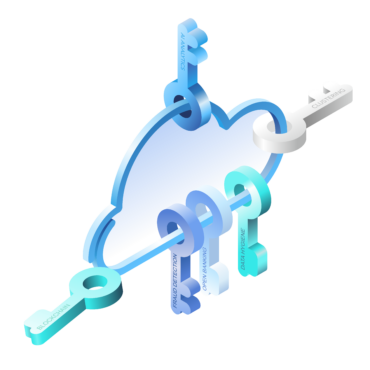Could an Obsession with AI Hurt Growth Prospects?
Updated 22 Jul 2024
AI, with its promise of efficiency, automation, and novel insights, has captured the imagination of businesses and workers alike. However, an obsession with AI could inadvertently hinder growth prospects if not approached with a balanced perspective. This article explores how an excessive focus on AI might impact the development of new systems, human jobs, and overall progress.
The Allure of Artificial Intelligence
Artificial intelligence (AI) has undeniably captured the collective imagination of the modern business world, emerging as a transformative force across various industries. Its promise to revolutionize the way we work, interact, and make decisions has led to widespread enthusiasm and adoption. By leveraging AI’s ability to analyze vast amounts of data, perform complex tasks, and even simulate aspects of human intelligence, businesses are experiencing unprecedented levels of efficiency and innovation.
The Transformative Power of AI
AI’s core appeal lies in its remarkable capabilities. For instance, AI systems can process and analyze enormous datasets far beyond the capacity of human cognition. This allows organizations to uncover patterns and insights that were previously hidden or too complex to discern. For example, AI-powered analytics platforms can analyze customer behavior, predict market trends, and provide actionable recommendations with a precision that enhances strategic decision-making.
Furthermore, AI has demonstrated its potential to automate routine and repetitive tasks, which traditionally consumed significant human resources. From managing administrative functions to handling customer service inquiries through chatbots, AI frees up valuable human capital for more strategic and creative endeavors. This automation not only boosts productivity but also reduces operational costs, providing a substantial competitive edge to businesses that harness these technologies effectively.
In industries such as healthcare, finance, and manufacturing, AI has proven to be a game-changer. In healthcare, AI algorithms are used to analyze medical images, predict patient outcomes, and personalize treatment plans. In finance, AI models detect fraudulent transactions and optimize trading strategies. In manufacturing, AI systems enhance production efficiency through predictive maintenance and quality control. These examples underscore the transformative impact AI can have on various sectors by driving operational improvements and innovation.
The Enthusiasm for AI Integration
The enthusiasm for AI integration can be seen in the way companies across the globe are investing heavily in AI technologies. Businesses are establishing dedicated AI teams, partnering with technology providers, and integrating AI solutions into their core operations. The aim is to capitalize on AI’s potential to drive growth, streamline processes, and gain a competitive advantage in an increasingly complex marketplace.
The pursuit of AI-driven improvements is also evident in the rapid development of AI applications and systems. Startups and established tech giants alike are pushing the boundaries of what AI can achieve, creating advanced tools that offer solutions to previously intractable problems. This continuous evolution of AI technology fuels a cycle of innovation and improvement, encouraging more businesses to adopt AI solutions and explore new possibilities.
Risks and Challenges of AI Obsession
Despite the clear benefits, an overemphasis on AI poses several risks and challenges that organizations must navigate. As companies become increasingly engrossed in the allure of AI, they may encounter several potential pitfalls that could hinder their overall growth prospects.
Overreliance on Technology: An obsession with AI may lead to an overreliance on technology at the expense of human judgment and creativity. While AI excels in data analysis and automation, it lacks the nuanced understanding and contextual awareness that human intelligence brings. Businesses that prioritize AI without considering the value of human input may find themselves limited in their ability to innovate and address complex challenges effectively.
Job Displacement: The automation of tasks through AI can result in the displacement of certain jobs, particularly those that involve routine or repetitive activities. While AI creates new opportunities and roles, the transition may not always be smooth. Workers may face challenges in adapting to new roles, and businesses may struggle with the social and economic implications of job displacement.
Ethical and Privacy Concerns: The deployment of AI raises ethical and privacy concerns, particularly regarding the handling of sensitive data and the potential for biased decision-making. Organizations must address these concerns by implementing robust data protection measures and ensuring that AI systems are designed to uphold ethical standards.
Imbalanced Focus: An intense focus on AI may lead to an imbalance in organizational priorities. Companies may invest disproportionately in AI at the expense of other critical areas such as employee development, customer engagement, and core business strategies. This imbalance can hinder overall growth and impact long-term success.
Implementation Challenges: Integrating AI into existing systems and processes can be complex and resource-intensive. Businesses may face technical challenges, such as compatibility issues and the need for significant infrastructure upgrades. Additionally, the effective implementation of AI requires specialized skills and expertise, which may be in short supply.
Balancing AI Enthusiasm with Strategic Considerations
To maximize the benefits of AI while mitigating its risks, organizations must approach AI adoption with a strategic mindset. This involves aligning AI initiatives with broader business goals, ensuring that AI complements rather than replaces human expertise, and addressing ethical and practical concerns proactively.
By adopting a balanced approach, companies can leverage AI’s transformative power without falling prey to the potential pitfalls of overemphasis. This includes investing in employee training and reskilling programs to prepare the workforce for new roles, addressing ethical considerations transparently, and maintaining a holistic view of organizational priorities.
In conclusion, while the allure of artificial intelligence offers significant opportunities for growth and innovation, it is essential for businesses to navigate its complexities thoughtfully. By balancing AI’s capabilities with human intelligence and strategic considerations, organizations can harness the full potential of AI and drive sustainable growth in an ever-evolving technological landscape.
The Role of Human Intelligence
Human intelligence remains a critical element in any successful business strategy. While AI can automate tasks and analyze data, it lacks the nuanced understanding and creativity that human workers bring to the table. For instance, AI systems excel at pattern recognition and data processing, but they fall short in areas requiring emotional intelligence, ethical considerations, and complex problem-solving.
Overreliance on AI could lead to a neglect of the human element in the workplace. If companies become too fixated on AI, they might overlook the importance of human skills such as creativity, empathy, and critical thinking. These skills are crucial for innovation and navigating the complexities of the modern business environment. Therefore, a balance between AI and human input is essential for sustained growth and success.
The Impact on Jobs
One of the most significant concerns associated with AI is its potential impact on jobs. AI has the ability to automate repetitive and routine tasks, which can lead to the displacement of certain jobs. While some jobs may be lost, new ones are also created as businesses evolve and adopt new technologies. The key lies in how businesses manage this transition.
Rather than focusing solely on AI-driven automation, companies should invest in the development of their workers. Reskilling and upskilling initiatives are vital to ensure that employees can adapt to the changing job landscape. By preparing their workforce for new roles and responsibilities, companies can mitigate the negative effects of AI on employment and harness the full potential of both human and artificial intelligence.
Balancing AI and Human Collaboration
The most effective use of AI comes from a collaborative approach between humans and machines. AI systems can handle specific tasks and processes, but human workers are essential for overseeing and interpreting AI-generated insights. For example, while an AI system might analyze data to identify trends, human workers are needed to make strategic decisions based on these insights.
Creating a synergy between AI and human intelligence can lead to better outcomes and drive innovation. Businesses should focus on integrating AI into their existing workflows in a way that complements and enhances human capabilities. This approach not only maximizes the benefits of AI but also preserves and leverages the unique strengths of human workers.
The Need for Strategic Development
To avoid the pitfalls of an overemphasis on AI, companies must adopt a strategic approach to its implementation. This involves evaluating the specific needs of the business and determining where AI can add value without overshadowing the importance of human input. Developing a clear strategy for AI integration can help businesses achieve their growth objectives while maintaining a balanced approach.
For instance, companies should assess their current systems and identify areas where AI can improve efficiency without displacing crucial human roles. This might include automating routine administrative tasks while ensuring that human workers focus on more strategic and creative aspects of their jobs. By aligning AI initiatives with business goals and workforce needs, companies can create a more effective and sustainable growth strategy.
Navigating the AI Landscape
As AI continues to advance, businesses must navigate its complexities and implications with care. An obsession with AI can lead to unintended consequences, such as job displacement, loss of human skills, and imbalanced growth. By adopting a thoughtful and balanced approach to AI, companies can harness its potential while preserving the essential role of human intelligence.
In conclusion, while AI presents significant opportunities for growth and innovation, it is crucial to approach it with a balanced perspective. Companies should focus on integrating AI in a way that enhances human capabilities and supports overall development. By doing so, they can achieve sustainable growth and capitalize on the strengths of both artificial and human intelligence.
In essence, the key to leveraging AI effectively lies in understanding its role as a tool rather than a replacement. By fostering collaboration between AI and human workers, businesses can unlock new possibilities and drive forward their growth prospects without falling prey to the pitfalls of an overzealous focus on technology.
Conclusion
Artificial intelligence (AI) undeniably offers transformative potential for businesses, enhancing efficiency, automating tasks, and providing valuable insights. Its integration can lead to significant advancements and competitive advantages. However, an obsessive focus on AI, if not managed wisely, can pose risks that might hinder overall growth prospects.
The allure of AI lies in its capacity to handle complex tasks and analyze vast amounts of data, but it is essential to balance its use with the irreplaceable value of human intelligence. Overreliance on AI might overshadow the creativity, critical thinking, and emotional intelligence that human workers bring to the table. Additionally, while AI can automate repetitive tasks, it also poses challenges such as job displacement and ethical concerns.
To navigate these challenges, organizations must adopt a strategic approach to AI integration. This involves leveraging AI as a tool that complements human capabilities rather than replaces them, ensuring that technological advancements are aligned with broader business goals and ethical standards.
In summary, while AI presents significant opportunities for growth and innovation, its integration must be approached thoughtfully. By balancing AI’s capabilities with human intelligence and strategic development, businesses can harness the full potential of AI and drive sustainable progress.



